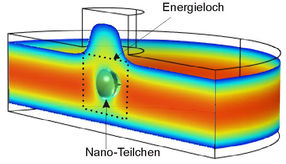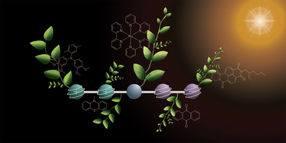Higher nicotine, carcinogen levels among smokeless tobacco users compared with cig users
Advertisement
U.S. adults who used only smokeless tobacco products had higher levels of biomarkers of exposure to nicotine and a cancer-causing toxicant -- the tobacco-specific nitrosamine NNK -- compared with those who used only cigarettes.
Even though smokeless tobacco is used less than cigarettes, it continues to be used among several population groups, particularly men and young people, which is a cause for concern because it has been found to have several adverse health effects and identified as a cause of cancer, explained Rostron. "Previous small studies have found high levels of toxic constituents including carcinogens in smokeless tobacco users, but analyses of nationally representative data have been generally lacking to date," he said.
Brian Rostron, an epidemiologist in the Center for Tobacco Products at the U.S. Food and Drug Administration (FDA), and colleagues analyzed data on biomarkers of exposure to seven tobacco constituents, including nicotine and tobacco-specific nitrosamine, available from 23,684 adults who participated in NHANES [National Health and Nutrition and Examination Survey] from 1999 to 2012. Participant-reported cigarette and smokeless tobacco use was used to categorize individuals into four groups. There were 16,313 nontobacco users, 488 exclusive smokeless tobacco users, 6,791 exclusive cigarette smokers, and 92 dual cigarette and smokeless tobacco users.
The geometric mean serum level of cotinine, the biomarker of nicotine exposure, was higher in exclusive smokeless tobacco users compared with exclusive cigarette smokers: 178.9 nanograms per milliliter (ng/ml) versus 130.6 ng/ml. The geometric mean urine level of 4-(methylnitrosamino)-1-(3-pyridyl)-1-butanol (NNAL), the biomarker of NNK exposure, was also higher in exclusive smokeless tobacco users compared with exclusive cigarette smokers: 583.0 picograms per milligram (pg/mg) of creatinine versus 217.6 pg/mg of creatinine.
Rostron said, "Our analysis of data from NHANES, a large, nationally representative study of U.S. health behaviors and outcomes, generated results consistent with those from previous smaller studies. Levels of biomarkers of exposure to nicotine and the cancer-causing tobacco constituent NNK were higher among exclusive smokeless tobacco users than exclusive cigarette smokers. This continues to put smokeless tobacco users at risk for adverse health effects, including cancer.
"Our findings demonstrate the need for continuing study of the toxic constituents of smokeless tobacco as well as their health effects on the individuals who use them," he added." This is why the FDA and CDC [Centers for Disease Control and Prevention] are continuing to analyze and monitor biomarker levels among tobacco users and why the FDA and NIH [National Institutes of Health] are collaborating on the Population Assessment of Tobacco and Health (PATH) Study, a large longitudinal study in which biospecimens such as blood and urine have been collected."
Rostron explained that although the current study uses the best available data, the nature of the data collected in NHANES is a limitation to the study. For example, because NHANES is a general health survey, there is no detailed information on the type of smokeless tobacco product used; there is no information on the quantity of the smokeless tobacco product used; and there is no information on duration or former use of smokeless tobacco products. He concluded that PATH Study data will allow for more specific analyses of tobacco use and harm.
Original publication
Brian L. Rostron, Cindy M. Chang, Dana M. van Bemmel, Yang Xia, and Benjamin C. Blount; "Nicotine and Toxicant Exposure among U.S. Smokeless Tobacco Users: Results from 1999 to 2012 National Health and Nutrition Examination Survey Data"; Cancer Epidemiol Biomarkers Prev; 2015



























































